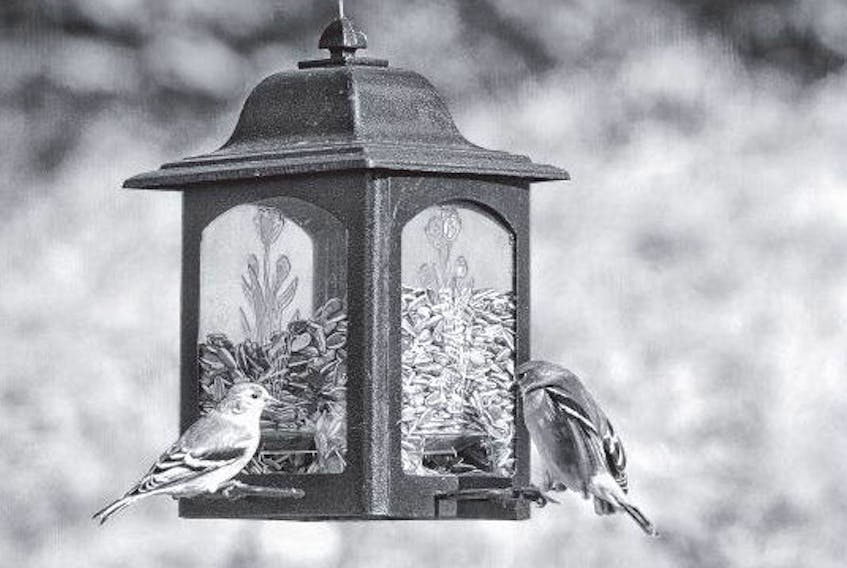Rebecca Clarke’s quiet morning routine of coffee and birdwatching turned more dramatic last Wednesday.
“We have a bird feeder on our deck so we cansee it from our living room so I was just sort of watching the birds, you know, it’s just a typical morning,” the Hammonds Plains woman said Monday.
“And I see this one (bird) that’s kind of lethargic looking and sort of slow and pokey and dopey so now it’s got my attention.”
Clarke grabbed her cellphone in the slim hope of grabbing a couple of pictures before it flew away.
“I thought there’s no way this is actually going to work,” said Clarke, who happens to be a professional portrait photographer as owner of Emotive Photography.
But the female purple finch was in too much distress to even notice.
“I literally could have reached out and touched her. . . . The poor little thing was gasping for breath, her feathers were all clumpy and there was food stuck around her beak and in her beak that wasn’t moving anywhere. . . .
“She stayed out on the deck for probably about 20 minutes just sort of gasping, reserving strength
o fly, sunning herself, and after a little while she flew off.”
She sent the video to the Nova Scotia Bird Society, which in turn sent it to the Canadian Wildlife Health Cooperative, which tracks these kinds of outbreaks.
The conclusion was the finch had trichomonosis, a parasitic infection that affects a bird’s throat and gullet. The disease was widespread last year in Atlantic Canada and the number of reports so early in the breeding season has sparked fears of another outbreak.
“We’ve had quite a few convincing eyewitness reports showing very suspicious clinical signs for the disease,” said Laura Bourque, a wildlife pathologist with the wildlife health group, in an interview Monday.
Afflicted animals have trouble swallowing andbreathing, and they regurgitate their food. Those that show obvious symptoms,
such as Clarke’s purple finch, are unlikely to survive, Bourque said.
Bird feeders are an ideal environment for the spread of the parasite Trichomonas gallinae, which was first identified as a problem among wild birds in the United Kingdom in the early 2000s.
“Different species of birds that might not normally mix with each other are all coming together around these feeders in high concentrations sometimes,” Bourque said. “We also know the (parasite) can survive in dirty bird seed, wet bird seed specifically, for a number of days.”
Bird feeder owners should make sure the feeders are clean and uneaten food is replaced regularly.
Bourque also encourages people to report suspected trichomonosis cases (or any other sightings of sick wildlife) on CWHC’s website at // www.cwhc-rcsf.ca/report_submit. php. The organization depends on public feedback for its work, she said.
Given the likelihood of another outbreak, the CWHC has put up information on its website, sent emails to groups like the Nova Scotia Bird Society and put together a pamphlet. The information includes how to properly clean feeders and the signs of trichomonosis.
Meanwhile, Clarke’s morning routine will still include coffee but not the bird feeder watching, at least for the time being.
“My feeder’s down. I’m going to be bleaching it and keeping it down for I would say at least a few weeks and more than likely for the summer,” said Clarke, an avid birdwatcher who admitted she’ll miss the sight of the finches, nuthatches, redpolls, chickadees and other species at her feeders.
But given the threat of another deadly outbreak, she’s going to spread the word in her neighbourhood about the importance of clean feeders and disease reporting.









